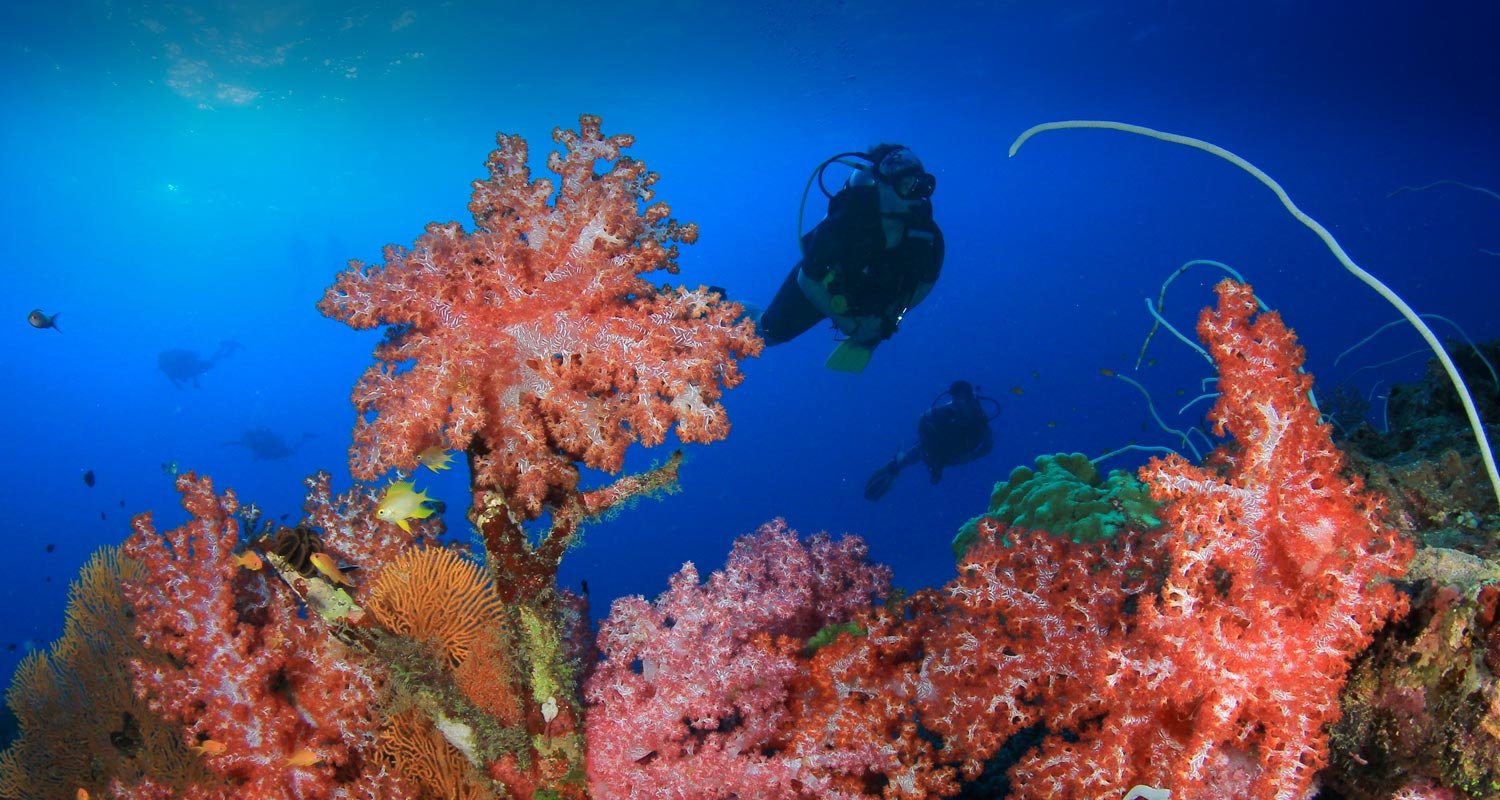Did you know that many, if not most, marine creatures are hermaphrodites? A shocking way to start an article, right? But many underwater creatures have both female and male reproductive organs. Read on to learn more about our hermaphrodite friends…
Hermaphroditism is fairly common in marine invertebrates (like nudibranchs). But fishes are the only vertebrates, that we know of, to be functional hermaphrodites. The ‘functional’ there means they are able to reproduce, rather than just having organs for show. Very often, in other vertebrates, hermaphroditism is due to mutations and individuals are not functionally reproductive. In the over 33,000 species of fishes, hermaphroditism has evolved very differently. Mother Nature likes variety, but there is always a very good reason for it.
When we use the word hermaphrodite, we often think of an individual who carries both male and female organs. In fishes, it works slightly differently. Individual fish tend to change from male to female, female to male, and sometimes even be both at the same time. They even sometimes go through several gender changes during their lifespans. It’s truly fascinating!
Why be hermaphrodite?
In nature, everything boils down to species survival. If a trait (like hermaphroditism) gives a species an advantage, then that trait will most probably be passed in the genes to subsequent generations.
Scientists believe that hermaphroditism improves the reproductive success of many marine species. And they have several proofs at hand that we are sure you, as a diver, have witnessed many times without even noticing.
Tinder is not available underwater
In remote and desolate places like the deep sea, it can be really hard to find a suitable mate. So when you come across one, it is rather handy to be able to switch your gender to be able to mate. It would suck if you only had male gametes and the only other fish you came across was another male. It is much easier if you can swing either way and have both male and female gametes.
This process is also really useful for fishes that needs to constantly hide from predators, like the coral goby. The ability to change sex in either direction makes it easier to form a pair without moving and also reduces the time between breeding events.
This type of hermaphroditism is called simultaneous hermaphroditism.
Size matters… to males… apparently
For some fishes, there is more chances to reproduce if you are bigger. This is especially true when there is a lot of strong, male competition. Parrotfish or other wrasses, are a perfect example of this process. In these situations the fish in question can stay female while it grows and once it reaches a certain size, it can then switch to male.
Size is also important for fishes who lay eggs. They need a guard to protect the eggs until they hatch. So certain fishes stay female to lay eggs until they reach a certain size. They will then change to male and then have a new job as the nest protector.
This change is called protogyny. That word comes from the Greek where proto means first and gyno means female.
Size matters… to females… but less so… allegedly
In some cases, it makes more sense to use the time when the individual is small to mate as a male. These types of fishes then switch, once they reach a certain size, and become female. The reasoning is that a larger female will make more eggs. Clown fishes are an example that we divers can see pretty much everywhere.
That change is called protandry. That word comes from the Greek where proto means first and andros means male.
Sounds too good to be true
So, why are not all animals hermaphrodites? Although hermaphrodites are able to maximise their reproductive success, they put a lot of energy into doing so. It costs a lot of energy to produce both male and female gametes at the same time. And it may result in producing fewer gametes overall. It is all about the trade-off.
How does it work in reality?
Simultaneous hermaphroditism
Remember above? A simultaneous hermaphrodite basically carries both sexes and can change at a given point to fit the need. This is rare, but it does exist in about 1% of the hermaphrodite fishes.
Perhaps one of the most amazing and remarkable examples of this hermaphroditism is the barred hamlet. This fish is very common in The Bahamas, Mexico and Florida Keys.
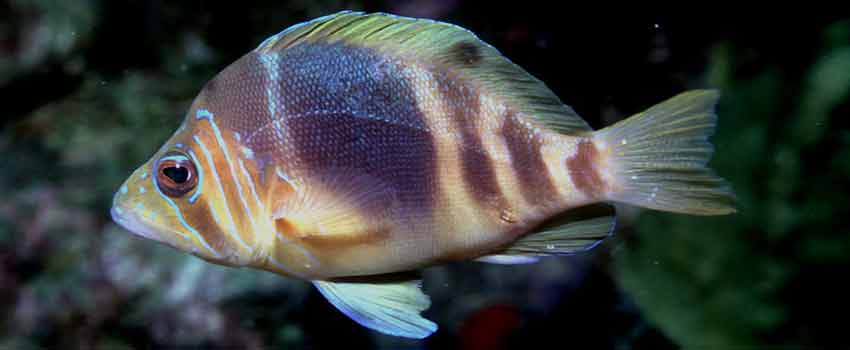
To avoid self-fertilisation that will decrease the genetic variability of the offspring, they trade roles in a strategy known as “egg trading”. During the spawning event, the first time that both sexes rises in the water column, the fish acting as a male embraces the one acting as a female while releasing sperm, and the fish behaving as a female releases eggs. A few minutes later, they rise again but now the roles are inverted!
Sequential hermaphroditism
Most commonly, a fish will start off as one gender and change to the other at a certain stage in life. This bears the scientific name of sequential hermaphroditism. Sequential hermaphrodites can only change sex once, normally. Some fishes though are able to flip flop as many time as they need!
In many sequential hermaphrodite fish, tissues of both sexes are present in the gonad prior to sex change whereas, in others species, reproductive tissues are completely replaced by the secondary sex.
You will certainly have seen examples of this evolution while diving.
Protogyny hermaphrodite (female to male)
These fish often form harems consisting of one male overseeing numerous females for life. The two primary responsibilities of the male are to defend its territory against other males, and to court and fertilise females of its territory. If the male dies, the dominant female of the harem will undergo a sex change from female to male.
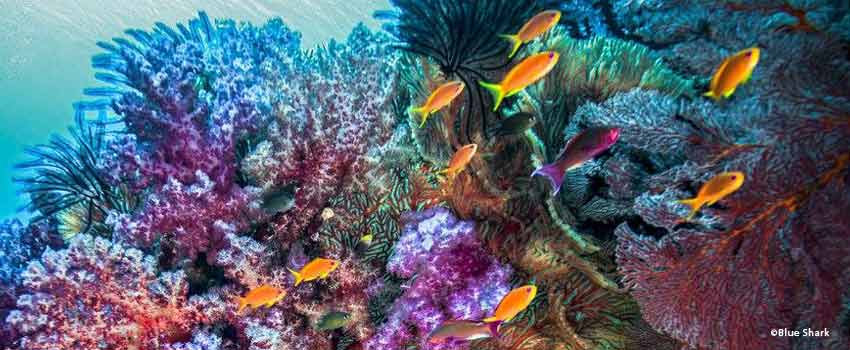
This sex change may take as little as 5 days and happens in stages. First, just a few hours after the male goes missing, the dominant female starts behaving as a male. This behavioural change triggers hormonal shifts that cause her gonads to become male gonads and her colours to change into male colours. The entire process is completed in just a few weeks.
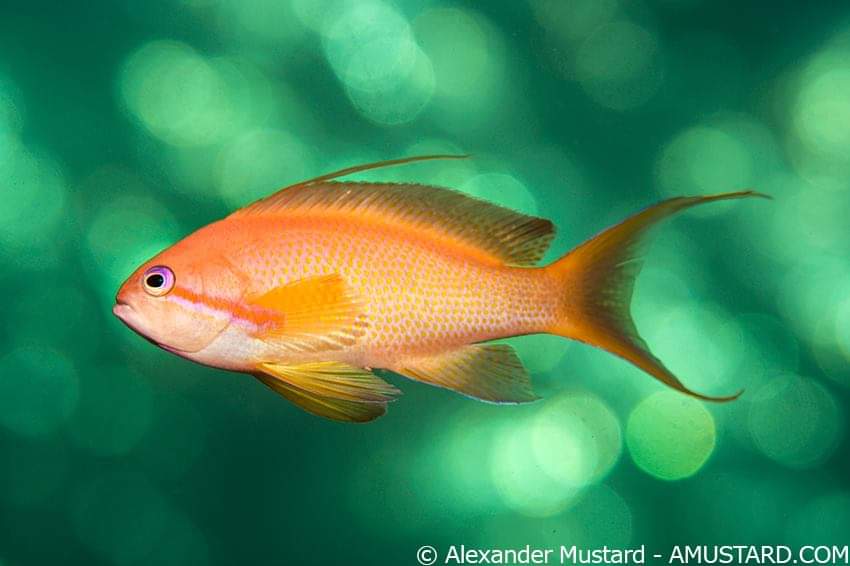
Wrasses, dwarf angelfish and anthias are the prime examples of this type of protogynous hermaphroditism.
Protandry hermaphrodite (male to female)
Protandrious hermaphrodites are common in coral reef systems. Contrary to the above, they do not keep harems. Rather, they are usually a single pair of breeding adults, with a female usually much larger in size. Though often there are other smaller males in the area.
If the dominant female dies, the larger male changes into a female and the next immature fish in the social order becomes a male to form a new breeding pair.
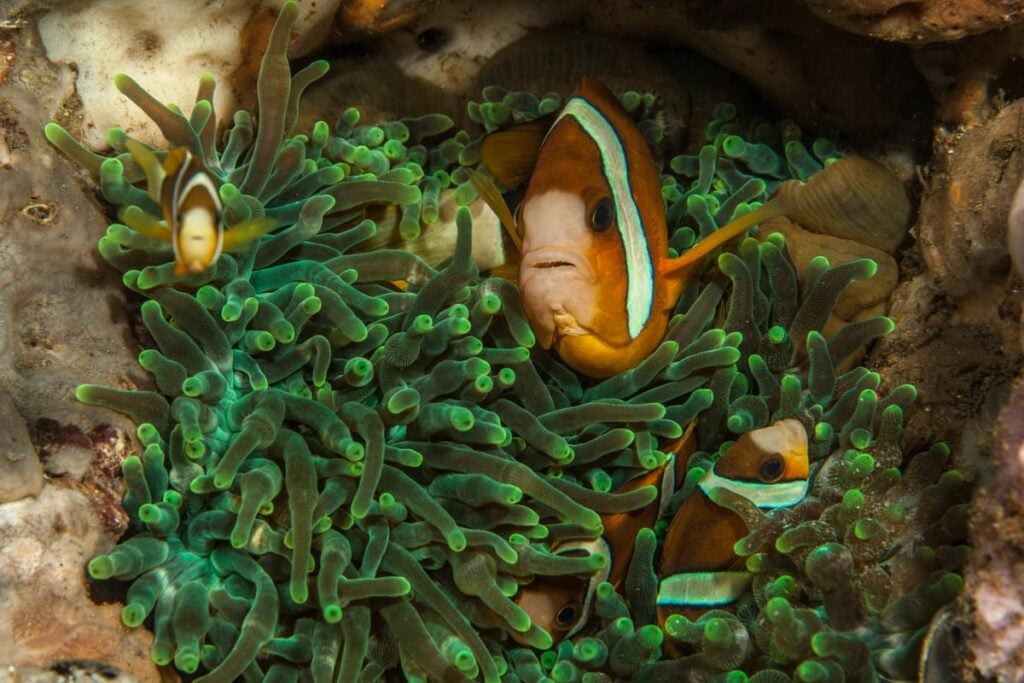
The prime examples of this type of hermaphrodite are clownfish, damselfish, blue ribbon eels and moray eels.
Bi-directional (the flip-flopper)
Generally, after an individual switches sexes there is no going back, but in some species of gobies, individuals can flip-flop between sexes multiple times. This is bi-directional hermaphroditism. This is often to fit the hierarchy of a group.
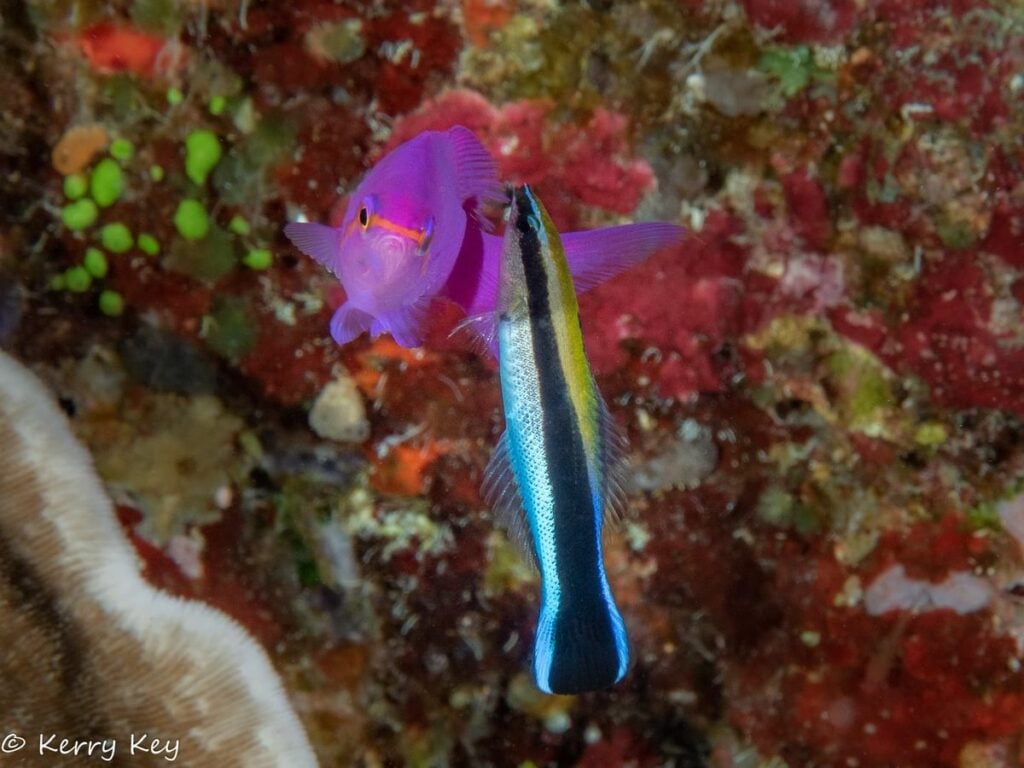
Examples of this are cleaner wrasses and gobies. Male cleaner wrasses (which are born females and change into males) can change back to females when there are only males in a group. In case of gobies, if a larger, more dominant male appears, the newly transformed male will change back to a female.
The ocean is home to such elegant gender fluidity! Come and dive with us to witness some of these amazing changes.



